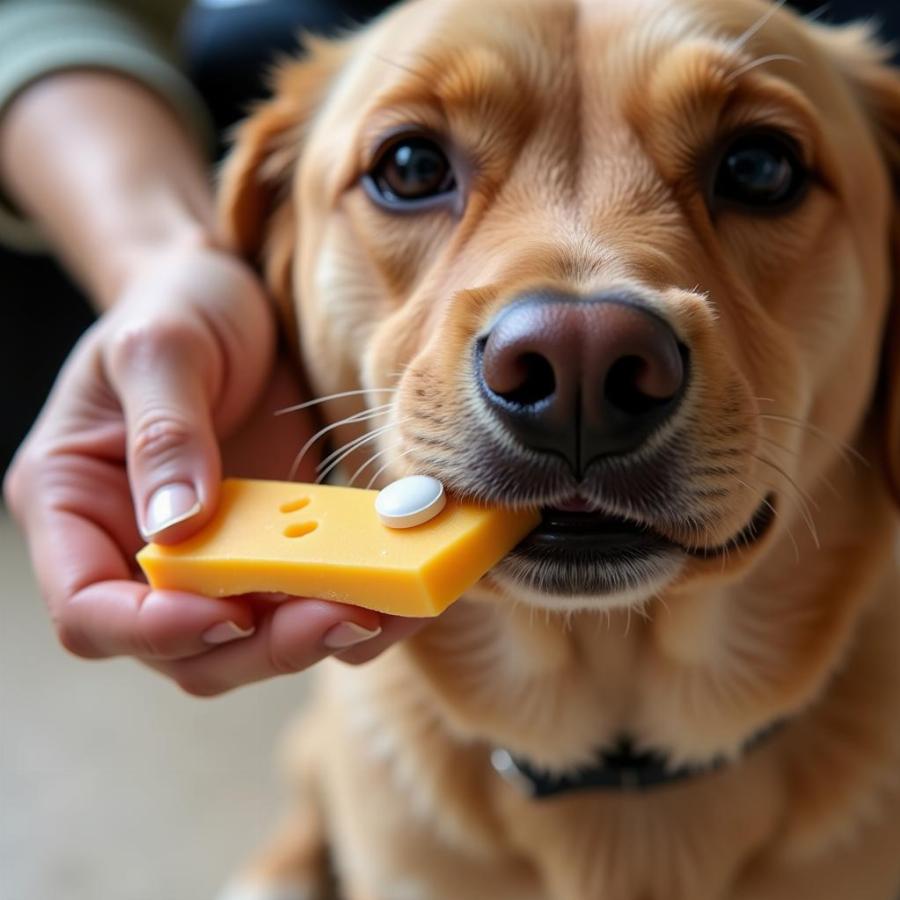Incurin tablets are a common medication prescribed for dogs experiencing urinary incontinence. This guide provides a comprehensive overview of Incurin, including its uses, dosage, potential side effects, and important considerations for dog owners. Understanding this medication can help you manage your dog’s urinary health effectively and improve their quality of life.
Understanding Incurin Tablets and Their Uses
Incurin tablets contain estriol, a weak estrogen hormone, that helps strengthen the muscles surrounding the urethra, improving bladder control. This medication is primarily used to treat hormone-responsive urinary incontinence in spayed female dogs. This condition often manifests as leaking urine while sleeping, resting, or during excitement. It’s important to note that Incurin is not suitable for all types of incontinence, such as those caused by urinary tract infections or bladder stones. A proper diagnosis from a veterinarian is crucial before starting any medication.
While less common, Incurin can also be used in male dogs to treat certain urinary conditions, although the dosage and monitoring may differ. Always consult with your vet before administering Incurin to a male dog. They can assess the underlying cause of incontinence and recommend the most appropriate treatment plan.
Proper Dosage and Administration of Incurin
The dosage of Incurin varies depending on the dog’s weight, the severity of incontinence, and individual response to the medication. Your veterinarian will determine the initial dosage and may adjust it over time based on your dog’s progress. It’s crucial to follow their instructions precisely and never change the dosage without consulting them.
Typically, Incurin is given once daily with food. Giving the medication with food can help improve absorption and minimize potential stomach upset. If your dog misses a dose, give it as soon as you remember, unless it’s close to the next scheduled dose. In that case, skip the missed dose and resume the regular schedule. Never give a double dose to compensate for a missed one.
 Administering Incurin Tablet to a Dog
Administering Incurin Tablet to a Dog
Potential Side Effects and Precautions
Incurin is generally well-tolerated, but some dogs may experience side effects. Common side effects include increased thirst and urination, vomiting, loss of appetite, and vulvar swelling. If you notice any of these side effects, contact your veterinarian. They can advise on whether to continue the medication or adjust the dosage.
More serious side effects are rare but can include bone marrow suppression and an increased risk of developing mammary tumors. Regular blood work is often recommended to monitor for any potential complications. Incurin should not be used in pregnant or breeding dogs due to the potential risks to the developing puppies.
Is Incurin Right for Your Dog?
Determining whether Incurin is the right treatment option for your dog requires a thorough veterinary examination. Your vet will assess your dog’s overall health, the underlying cause of incontinence, and consider any other medical conditions they may have. They may also recommend additional diagnostic tests, such as urinalysis and blood work, to rule out other potential causes of incontinence.
What if Incurin Doesn’t Work?
If Incurin doesn’t effectively manage your dog’s incontinence, there are alternative treatment options available. These may include other medications, behavioral modifications, or surgical interventions. Your veterinarian can discuss these options with you and help you determine the best course of action for your dog’s individual needs.
Conclusion
Incurin can be an effective treatment option for hormone-responsive urinary incontinence in dogs, significantly improving their quality of life. However, it’s crucial to consult with your veterinarian for proper diagnosis, dosage, and monitoring. By understanding the medication’s uses, potential side effects, and precautions, you can play an active role in managing your dog’s urinary health and ensure their overall well-being.
FAQ:
- How long does it take for Incurin to start working? It typically takes a few weeks to see noticeable improvement in incontinence.
- Can Incurin be used with other medications? Discuss all medications your dog is currently taking with your veterinarian to avoid potential drug interactions.
- What should I do if my dog experiences side effects? Contact your veterinarian immediately if you notice any side effects.
- Are there natural alternatives to Incurin? Discuss potential natural remedies with your veterinarian, as some may not be safe or effective.
- Can male dogs take Incurin? While less common, it can be used in males; however, consult with your vet for proper diagnosis and dosage.
- Is Incurin safe for long-term use? Your veterinarian will monitor your dog’s health and adjust the treatment plan as needed for long-term use.
- What are the signs of urinary incontinence in dogs? Common signs include frequent urination, dribbling urine, and accidents in the house.
Further Reading on Beaut Dogs:
- Canine Urinary Health: Common Issues and Prevention
- Understanding Your Dog’s Medications
- Senior Dog Care: Managing Age-Related Health Concerns
Beaut Dogs is your one-stop resource for all things related to canine companions, offering expert advice and valuable insights into the world of dogs. We provide comprehensive information on breed characteristics, health care, nutrition, training, and more. When you need support, please contact us at Email: [email protected] to get detailed and accurate answers from Beaut Dogs. Visit us at https://beautdogs.com to learn more about how to care for your furry friend.